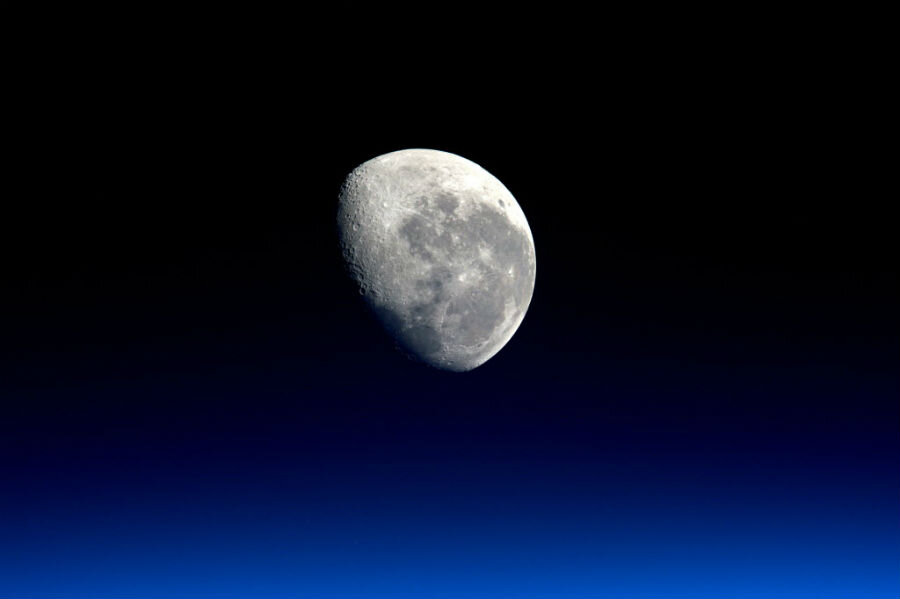Is the moon's gravity lopsided?
The moon has been orbiting the Earth for billions of years. In that time, our planet has formed a special gravitational bond with our natural satellite, locking it into place with one side always facing us.
Over time, the moon's rotational period came to match its orbital period, providing us with a familiar, cratered face visible from Earth. But the other side is smoother and looks almost untouched to the naked eye, with smaller, lighter meteor craters. So why is one side different from the other? [Editor's note: This paragraph has been updated for clarity.]
A number of explanations have been put forth to explain the strange differences between the near and far side of the moon. But since we could only view one side of the Earth for much of history, it is only in recent years that scientists have begun to piece together a gravitational advantage of the near side over the far.
In order to map the moon's gravitational field, NASA launched two probes: GRAIL A and GRAIL B. Nicknamed "Ebb" and "Flow," respectively, this Gravity Recovery and Interior Laboratory mission created the most detailed gravity field map of any celestial body during their mission, which lasted from September 2011 to December 2012.
"What this map tells us is that more than any other celestial body we know of, the moon wears its gravity field on its sleeve," said GRAIL Principal Investigator Maria Zuber in a NASA statement from December 2012. "When we see a notable change in the gravity field, we can sync up this change with surface topography features such as craters, rilles or mountains."
The probes found that while there were density differences across the moon's surface, largely centered around impact craters that heavily redistributed lunar mass in various regions, the gravity was actually fairly even without being unduly lopsided toward one side or the other. While some scientists hold to the theory that the moon was formed out of a slow-motion collision of two smaller moons that lead to the dark side being less dense than the other, that density differential did not seem to be responsible for any hemispheric gravitational differences.
"So if the Moon isn’t lopsided inherently, what is it that causes the Earth’s gravitational pull on one side to be significantly stronger than the pull on the far side?" Jillian Scudder, a contributor to Forbes with a PhD in physics, said in an article on the question of the moon's gravitational pull. "This question works in both ways, as it’s the Moon’s reciprocal pull on the Earth which causes high tide. The answer is simply distance."
After the moon was created, likely as the result of a giant impact between Earth and another planetary body, both the moon and our future planet would have been sent spinning much more quickly than they are today. But as time passed, the pull between the two slowed them both down, and the moon became "tidally locked" with the Earth, with one side always facing away from it. With the moon essentially being locked in place, the far side became less influenced by gravity than the side always facing Earth.
"Gravitational pull weakens with distance; in fact, if you drift twice as far away from an object, the gravitational pull weakens by a factor of four," said Dr. Scudder. "Drift four times further, and gravity loosens by a factor of 16."
Gravity is a relatively weak force, but the difference in gravity between the moon's far and near side (about 2,159 miles apart) is enough to be measured by scientists. Over time, this may have had an effect on some of the striking differences between the side of the moon we can see and the side we cannot.
"Because the Moon’s front side is 2,159 miles closer to the Earth than the far side, the gravitational force on the near side is just a tad stronger than the gravitational force on the far side," said Scudder. "This is not a strong effect, but it is measurable, and it is this differential across the planet and our moon which causes both the liquid of our planet’s oceans to pull towards the moon, and the same side of the moon to always face us."






